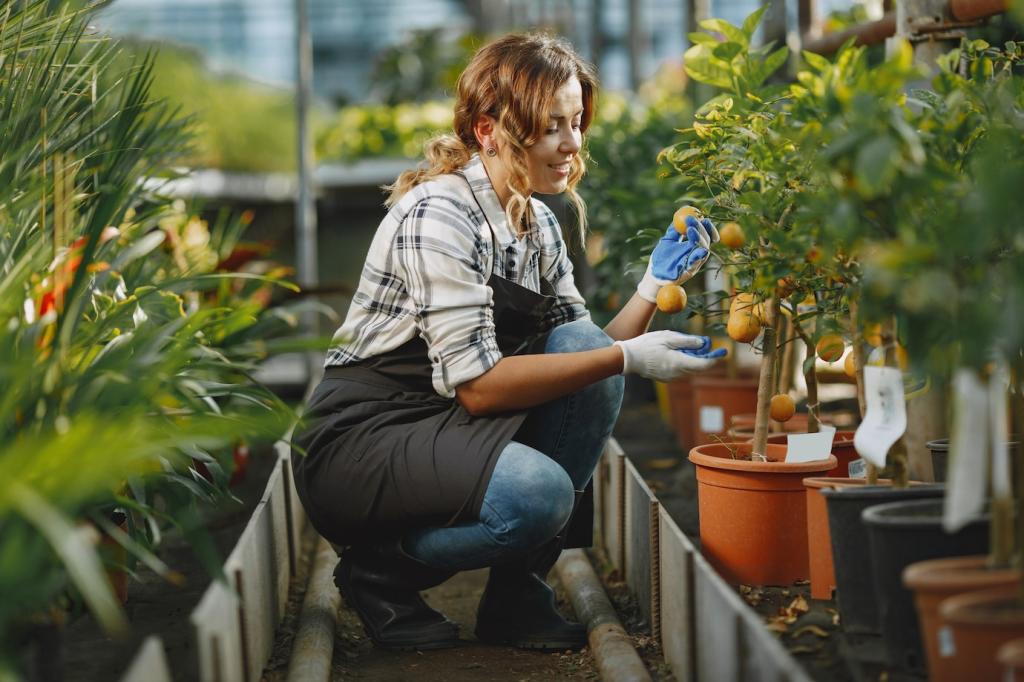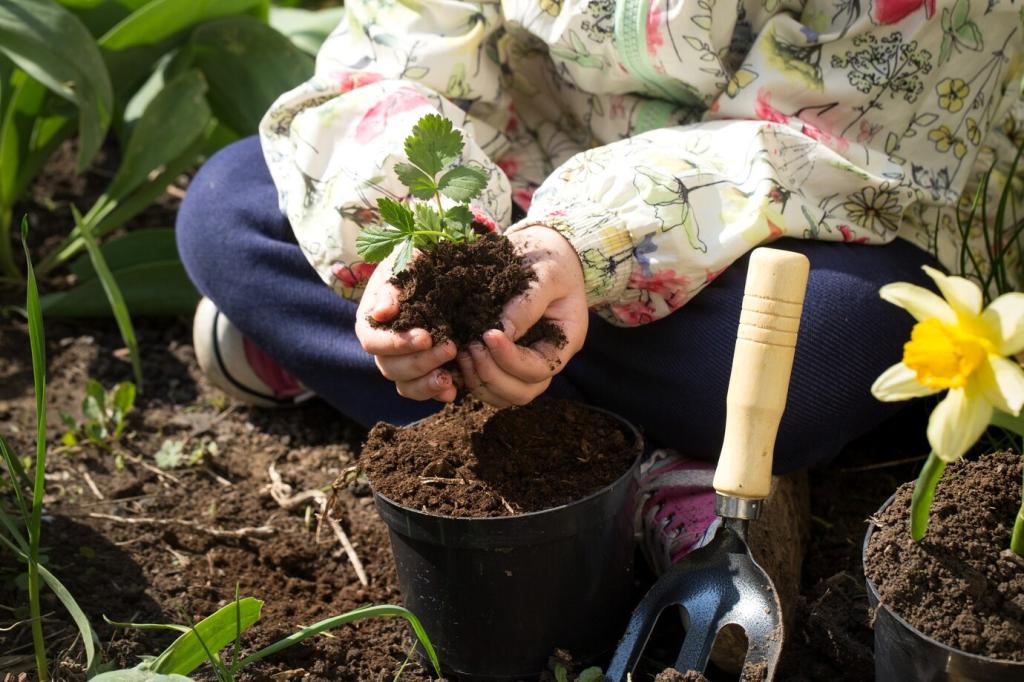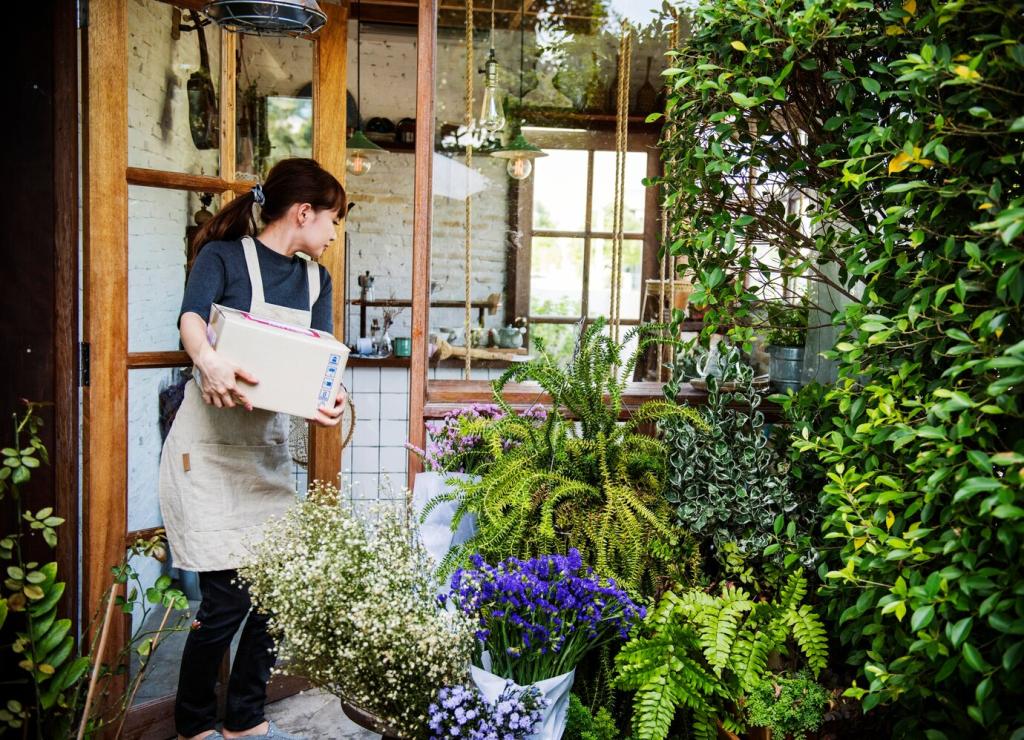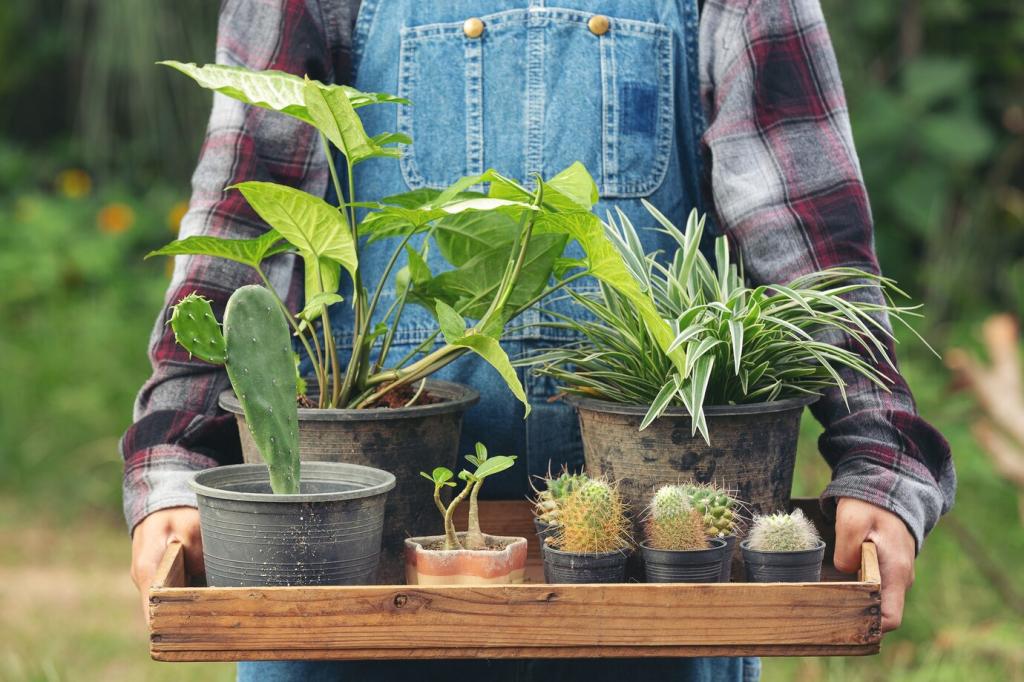Sustainable Plant Selection for Urban Gardens
Choosing the right plants is crucial for thriving, low-impact urban gardens. Sustainable plant selection not only enhances biodiversity and resilience but also minimizes the environmental footprint of city landscaping. By understanding site-specific conditions and ecological impacts, urban gardeners can design beautiful, productive spaces that contribute to a healthier urban ecosystem. This guide highlights the principles and practices that support sustainable plant choices in urban environments.
Previous slide
Next slide

Previous slide
Next slide
Incorporating Drought-Tolerant Plants
01
Promoting Water Conservation
Drought-tolerant plants require significantly less supplemental watering, freeing up precious urban water resources for other critical needs. This conservation not only lowers water bills but also supports responsible urban infrastructure management. Organizing plantings around water-wise principles contributes to the overall resilience and resource-efficiency of the entire garden space.
02
Ensuring Year-Round Resilience
Drought-adapted species are better equipped to endure prolonged dry conditions, a frequent occurrence due to climate change or urban microclimates. These plants maintain their health and appearance even in the face of water restrictions, preserving the garden’s beauty year-round. Their ability to survive through challenging periods reduces the need for remediation or expensive plant replacements.
03
Supporting Urban Wildlife
Even in water-scarce environments, a thoughtfully designed garden filled with drought-tolerant plants can provide nectar, seeds, and shelter for a variety of urban wildlife. These sustainable choices make it possible to maintain ecological support functions without excessive resource use, benefiting both the gardener and the surrounding ecosystem.

Promoting Ecosystem Services
A diverse planting palette supports ecosystem services such as pollination, pest control, and soil health. The greater the variety of plant species, the more resilient and functional the urban garden becomes. Diversity encourages healthy interactions between plants, insects, and microorganisms, creating a balanced environment that sustains itself with less intervention.

Enriching Urban Landscapes
Biodiversity brings vibrancy and visual interest to city gardens, with a tapestry of colors, textures, and forms throughout the seasons. This diversity not only appeals to human senses but also attracts a wider array of pollinators and beneficial wildlife. Rich plantings offer changing landscapes that delight visitors and promote sustained engagement with the green space.

Reducing Pest and Disease Incidence
Monocultures are prone to rapid pest outbreaks and disease spread, while diverse gardens create natural barriers to these threats. Multiple species with varying susceptibilities make it harder for pests or pathogens to gain a foothold. Sustainable urban gardens that emphasize diversity require fewer chemical controls, aligning with ecological stewardship principles.
Considering Plant Longevity and Growth Habits

Planning for Long-Term Success
Selecting plants based on expected lifespan and mature size ensures that the garden will continue to thrive over time without frequent replacements. Long-lived perennials, shrubs, and trees offer sustained benefits while annuals or short-lived species play supportive roles. Prioritizing longevity enhances the overall return on investment in planting efforts and materials.

Anticipating Plant Interactions
Urban spaces benefit from designs that prevent overcrowding, shading, or competition for resources. Choosing plants with compatible growth habits—considering factors like height, spread, and root systems—minimizes maintenance and fosters harmonious, healthy development. Proper spacing and layering also improve airflow and access to sunlight, reducing the risk of disease.

Matching Plants to Available Space
A clear understanding of how much space each plant will occupy at maturity is essential in smaller urban environments. Preventing overgrowth and invasive tendencies ensures each species’ sustainability within the community planting. Creative combinations of groundcovers, climbers, and compact species make the most of even modest spaces.

Urban Food Security
Edible plants enable city gardeners to grow a portion of their own nourishment, reducing dependency on distant food supplies. Cultivating vegetables, herbs, and fruit bushes supports fresher, low-miles produce and enhances personal food security. Integrating edibles within ornamental plantings creates beautiful, productive, and sustainable urban spaces.

Multi-Functional Benefits
Some plants offer more than one advantage—such as groundcovers that suppress weeds, berry bushes that attract pollinators, or fruit trees that provide shade. Multi-functional species maximize the return from each bit of available soil, contributing to ecosystem health, beauty, and functionality. These selections reflect a holistic approach to achieving multiple goals with limited resources.
Selecting Plants for Climate Adaptability

Plants able to withstand both hotter summers and colder winters are increasingly important in unpredictable urban climates. Varieties selected for heat and frost tolerance maintain their vitality through seasonal swings. This adaptability enhances garden continuity and reduces the risk of total plant loss due to extreme events.
Promoting Low-Maintenance Gardening Practices
Selecting Low-Input Plants
Plants requiring little to no supplemental watering, fertilization, or pruning free up time and resources for urban gardeners. These low-input species are particularly desirable in city settings where time constraints or lack of expertise can hinder garden upkeep. Sustainable choices facilitate gardening success for a wider range of urban residents.
Minimizing Chemical Use
By favoring plants naturally resistant to pests and diseases, gardeners can drastically cut down on chemical pesticides and fertilizers. This approach preserves soil and water health, safeguarding public and ecological well-being. Low-maintenance, environmentally friendly practices support the overall integrity of the urban ecosystem.
Reducing Waste and Garden Debris
Plants that drop fewer leaves, require less frequent cutting, or efficiently cover bare soil help reduce garden waste. This lessens the burden on municipal green waste systems and supports closed-loop composting practices. Sustainable urban gardens aim for efficiency at every step, decreasing waste and nurturing a regenerative approach.
